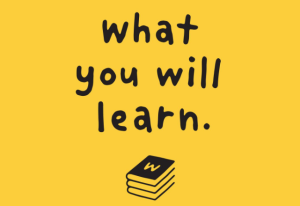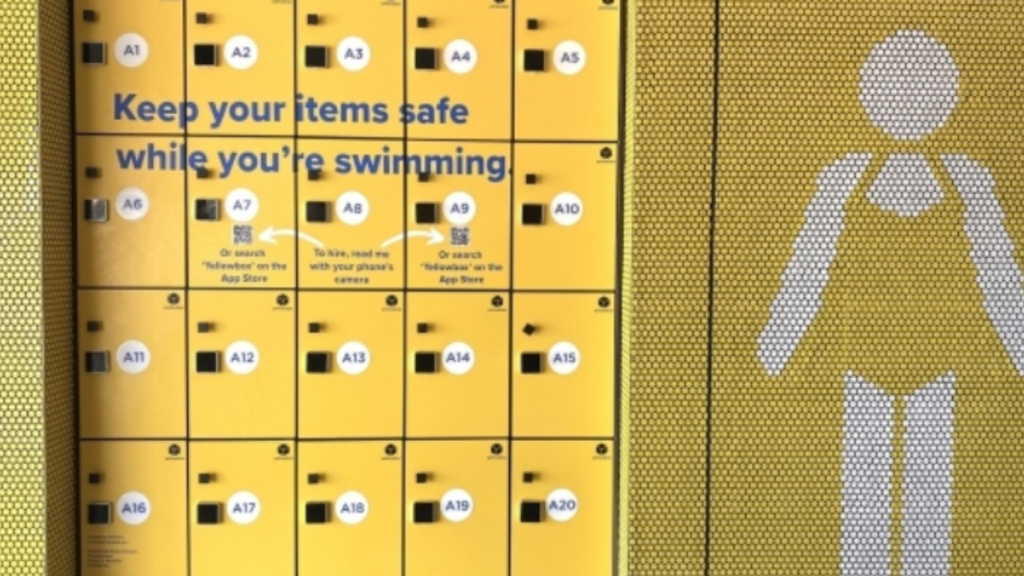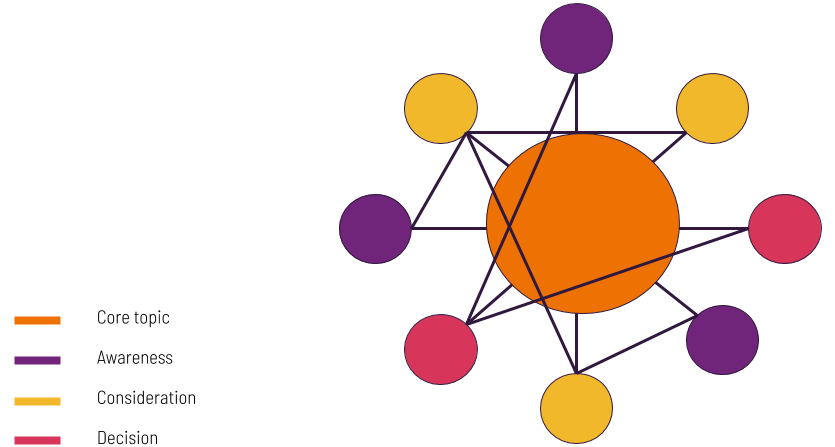Imagine coming straight out of University and having an idea for an app.
Imagine all of the anxiety and struggles you would face and problems you would need to overcome with a lack of experience. But also imagine the unique sense of confidence because the younger you are, the less you have to lose.
Find out how a successful smart locker app company unlocked the minds of young entrepreneurs and more in this episode of… FORWARD THINKING.
Brendan Hill is joined in this episode by co-founders of Yellow Box, Vanessa Zhao and Ho Jun Tang. They all explore how an idea in university birthed and grew into the successful smart-locker app it is today.
- Yellowbox works with the highest quality local locker manufacturers, to provide a complete hardware and software solution to meet your needs.
- Yellowbox currently operates in Australia, New Zealand, and in Europe
- They have newly installed locker technology in the State Library of New South Wales, Mosman Swim Centre, and around Randwick’s beaches and aquatic centers
(Disclaimer: Before listening, please take note that the original recording of this interview took place in 2019. Some information discussed has evolved through time in adjustment to Yellow box’s current agenda)
Table of Contents
ToggleWhat you will learn from this episode:

- How the idea of Yellowbox came about
- How to face challenges at a young age
- Why being at nightclubs at 1 AM was a helpful cause for the growth of Yellowbox
- The impacts of the University of New South Wales’ acceleration programs on their idea’s growth
- How Vanessa had to pick between a full-time grad job and gaining momentum with the startup
- The branding and physical marketing of Yellowbox
- How Yellowbox will be pushing for geo-fencing
- Using research to gain approval from the relevant stakeholders
Notable Quotes:

- “It’s just about product improvement and making it much more seamless and intuitive”
- “So it would just us four founders sober at 1:00 AM at random nightclubs next to sweaty 18-year-olds dancing. It was actually one of the best nights of my life because we watched people download the app for the first time and completely intuitively understand how to use it, hire it, and share a Yellowbox with their friends”
- “It’s hard to envision once you’re building a product or starting a business, how it’s going to actually be used by the customer.”
- “Being able to have just so many people within our own networks to get advice and feedback from so readily is, has been a big help for us”
Resources mentioned:
- Yellowbox on Linkedin, Facebook, Instagram and Twitter
- OVO bikes and Lime Bikes
- Peter Farrell Cup
- 10X Accelerator program
Book and podcast recommendations:
- Zero To One by Peter Thiel
- Steve Jobs Autobiography
- Y Combinator podcast
What business would you build on Mars?

Ho Jun: I’ve got a theory that the Martians are going to be a bit freaked out by Elon Musk’s dance moves. I think it’s a bit of a risk that we need to mitigate and I think they would pay loads of money, a lot of money. There’s a massive market to get him some dance lessons.
Vanessa: You don’t want awkward to be the first point of contact between humans and Martians. Obviously, we have to send Elon. We can’t send anyone else, but he’s got his weaknesses as much as we love him.
Ho Jun: Yeah. We’re solving that problem. Clear problem, clean market, profit!
Find Vanessa and Ho Jun here:
Transcript
[00:00:00] Daren: Imagine coming straight out of university and having an idea for an app. Imagine all the anxiety and struggles you would face and problems you would need to overcome with your lack of experience. But also, imagine the unique sense of confidence because the younger you are, the less you have to lose, find out how a successful smart locker app company unlocks the minds of young entrepreneurs and more in this episode of Forward Thinking.
Hey everyone. I’m Daren Lake the audio content manager here at Metigy. Welcome to Forward Thinking, a podcast by Metigy. In this series, we speak with inspirational business owners, brands, and marketing experts to learn from the experiences on the frontline and uncover what it takes to build a world-class business.
We’re joined in this episode by co-founders of Yellowbox Vanessa Zhao and Ho Jun Tang. They explore how an idea at university birthed and grew into the successful smart locker app it is today. Some facts about Yellowbox. It works with the highest quality locker manufacturers to provide a complete hardware and software solution to meet your needs.
Yellowbox currently operates in Australia, New Zealand, and now Europe. If you’re in Sydney, their newly installed locker technology is available at the State Library of New South Wales, Mosman Swim Centre and around Randwick’s beaches and aquatic centers.
What you’ll learn in this episode: how the idea of Yellowbox came about how to face challenges at a young age, the impacts of university of new south Wales acceleration programs on Yellowbox’s growth, how Vanessa had to pick between a full-time grad job and gaining momentum with the startup and much more.
Here’s the chat we had with Yellowbox co-founders and Metigy’s head of content and employee number four, Brendan Hill.
[00:01:46] Brendan: Vanessa and Ho Jun, welcome to the show.
[00:01:48] Vanessa: Thank you. Hi, Brendan.
[00:01:49] Ho Jun: Thanks Brendan.
[00:01:51] Brendan: We’re excited to talk to you today. I only met you. What about six months ago in an innocuous little dumpling bar in the middle of Chinatown in San Francisco. Here we are back in Sydney. You’ve booked your first revenue.
You’re getting some traction with Yellowbox, so I’m excited to unpack your journey so far. Can you tell us a bit more about what Yellowbox is?
[00:02:15] Ho Jun: So Yellowbox is essentially a network of smart lockers that you can hire using the Yellowbox app. They’re found currently in nightclubs and at Coogee beach, and we’re looking to go into other retail stores and train stations alike.
[00:02:31] Brendan: All right. What’s the business model for Yellowbox?
[00:02:35] Vanessa: Yeah, so we offer the boxes for free to all the venues. Very similar to vending machines and then customers pay us $2 an hour.
[00:02:42] Brendan: I know you guys, in the early days, you had lots of feedback from customers. You went out to some of your venues, like the nightclubs, for example.
So what was that like going to nightclubs and actually gathering?
[00:02:57] Vanessa: So it would just us four founders sober at 1:00 AM at random nightclubs next to like sweaty 18 year olds dancing. It was actually one of the best nights of my life say because we watched people download the app for the first time and completely intuitively understand how to use it, hire it, and share a Yellowbox with their friends.
So we gathered information on what they like to store, which is typically a jacket or a handbag, and they were happy to enter their credit card details. We got our first revenue that night. It’s super exciting and really surreal experience.
[00:03:36] Ho Jun: Yeah, I think the way to describe it would be surreal.
It’s hard to envision once you’re building a product or starting a business, how it’s going to actually be used from the customer. It was, yeah, quite surprising, quite surreal.
[00:03:51] Vanessa: I think it all happened to us earlier than we expected. We’ve always talking about, when we get revenue, but it happened so fast that we were almost like a bit short-sided and yeah.
[00:04:03] Brendan: That’s awesome. How did you guys come up with the idea? Cause, I’ve got some friends. Once I a good listener of the show, Kristen Phillips, and she actually has lost two laptops. She’s lost her phones. I bet she would have loved her solution, like a smart locker at one of these venues. Is that how you guys came up with the idea of what was the incentive?
[00:04:22] Vanessa: So I came up with the idea during a user experience design course, and we were just tasked with finding some sort of innovative idea. The main reason was just to learn framing and the basics of UX design. But I was inspired by the lack of storage options at uni at university specifically. I was more thinking of an Airbnb, but full bags scenario, but then I realized that people inherently trust physical lockers, more than another strain.
And that’s when I thought of having that kind of hardware in place. I think the whole picture came together when I started thinking about the shared bike system with OVO bikes and lime bikes. Pretty much, this is very similar setup, but for smart lockers. All the dots connected and the idea came about.
[00:05:13] Brendan: And you guys obviously love a challenge. You guys are super young. You’re dealing with hardware and software. How do you deal with so many challenges at a young age? And I guess you don’t have much experience. How have you made up for that in other areas?
[00:05:30] Ho Jun: I think it actually helps us a little bit because we don’t see many challenges as barriers.
We just attack it head on just like any other projects that we get assigned, whether it was from university or from work or from life, all we’ve known is just to tackle it head on.
[00:05:46] Brendan: That degree, of… I wouldn’t say naivety?
[00:05:50] Vanessa: I would say it was like a blessing in disguise because then when you’re not conscious of, oh, I’m like older, I should know this and you won’t hide anything like fear of being judged or anything.
Now it’s just very blatant. We’re young. We don’t know anything when they even like, probably don’t know as much as everyone else. We just, we can just be ourselves and just ask a silly questions and learn more.
[00:06:14] Brendan: I’ve ever had anyone from gen Z on this show before. Oh, okay. Are you guys gen Z?
[00:06:21] Ho Jun: What is gen Z?
[00:06:21] Vanessa: I don’t know what I am. I’m born in 98
[00:06:24] Ho Jun: I was born on the cusp. It changes every year, I think.
[00:06:28] Vanessa: I’m a tourist. I don’t know what gen Z is.
[00:06:34] Ho Jun: Yeah, I think I’m just gen Z.
[00:06:36] Brendan: Yes. What insights have you got from, being so young, have you identified that that generation is one of your target customers? How do you communicate with these people?
[00:06:46] Ho Jun: It actually helps a lot. Being able to have just so many people within our own networks to get advice and feedback from so readily is, has been a big help for us. I know all the people that have helped us, their insights have been really helpful within our product, our app and our processes.
So I think it’s been, yeah, been quite helpful.
[00:07:09] Vanessa: I think it’s like they say, like when you’re building a product, you need to be building it for yourself as well. I think that’s the strongest point when, oh, this is what I want to use myself. We’ve been really lucky in finding that our target customer in the end, our early adopters are really just teenagers and, young people our age, because they’re quite digitally savvy the all across Uber, hiring things on demand.
We’ve had access to that network as well as our own experience and empathizing with what young people want.
[00:07:38] Brendan: And so you started this business straight out of university. Is that right?
[00:07:42] Vanessa: It started it while we were at university. I was in my third year. I think everyone was around there and we entered a university pitching competition called the Peter Farrell cup.
And so that really pushed us to validate our idea and get all the business model basics in place. We were lucky enough to get runner up for that. That gave us like five grants just to get an MVP out there. That’s how everything started.
[00:08:08] Brendan: And did the university give you any other support after that?
[00:08:12] Ho Jun: Yeah. Once we entered into the Peter feral cup program and were immediately introduced to you and SW founders program, which helped us understand what Kayla the university had on offer for us. That led us to understanding more about and learning the more, the opportunity of the 10 X accelerator program of which we went through last August. I think we finished last August.
[00:08:38] Vanessa: I think 10X is one of the most vulnerable things from like the whole entrepreneurship division. Everyone’s heard about it and we knew that would be the perfect next step for where we were as a business at that time. Since entering that, that kind of really just made us take everything seriously and it accelerated us literally a lot.
[00:08:59] Brendan: Another tough choice that you had to make personally.
You had to choose whether or not to quit your full-time job and join Yellowbox full time. Can you tell us the story behind that?
[00:09:11] Vanessa: It was basically at a crossroads where we had just finished an accelerator program and our business had gained a lot of momentum. I knew that with that the holiday period coming up and olders just pretty much the deduction of momentum is like the death of your business.
So it was that I was at that point where I was like, Making these big questions what do I want to do with my life? Do I want to be working for someone else or working on Yellowbox? And I thought Yellowbox was really just like a, such a gift. I didn’t expect to be able to work on a startup so young.
So I thought that was like, at this age, there’s not really anything to lose then might as well just make that leap of faith and hopefully learn more from the process.
[00:09:51] Brendan: What other kinds of emotions are you feeling at the time when you had to choose? Because it was with a pretty reputable company. I won’t mentioned anyone by name!
[00:10:01] Vanessa: It was a pretty good grad job. Just your typical, like straight out of uni grad job.
And it was definitely a safety net and I knew that it would help me progress career wise. But then also though I was learning things, I didn’t feel like I was as challenged as I would be in a startup role. Emotions. I would probably be feeling a lot of anxiety, but over all of that, it was like this deep gut feeling of that I was making the right choice and excitement, just I made that choice, not out of obligation, but out of what I really wanted to do with my life.
Like I just had a really strong draw to do it
[00:10:39] Brendan: Awesome. Talking about Yellowbox’s future. You’ve come out of the university accelerator at UNSW. You’re getting some traction with the nightclubs and beaches that you mentioned. Are you taking like a Uber city by city playbook approach?
Are you starting local? You’re getting the data. You getting customers from each city. I just mentioned this because share with Oscar who were on the podcast as well. Last month, they mentioned that they executed a similar strategy and now they’re moving their business into Brisbane and Melbourne. Is that something that a similar path that you guys are going to follow?
[00:11:14] Ho Jun: Yeah, pretty similar. I think we’re looking to gain the network effect that we want to achieve in Sydney, where a user is able to open up the Yellowbox app and see within at least a kilometer or probably less than that, a Yellowbox within distance that they’re able to access and use.
[00:11:34] Brendan: Nice and talking about that marketing strategy now and getting these people onto the Yellowbox. Can you talk us through your marketing strategy?
[00:11:45] Ho Jun: It’s quite a multi-channel pronged strategy that we use. The beauty of our product is it is a physical product and you’re able to capture the imagination of the customer as soon as they see it.
And that’s where our branding and our physical marketing on our lockers really come true. That’s what we do a lot of testing with. Ask the customers a lot about, which is what kind of messages we put on our lockers and what kind of styles, colors, and prompts we use to allow them to download the app and know exactly what they are supposed to do. But then alongside that as gen Z, we do, we know the channels that essentially our market utilizes.
And that’s mostly your Instagrams and Facebooks. Yeah. Nice.
[00:12:32] Brendan: Nice. Can you talk me more through the physical branding and I guess how you came up with the whole Yellowbox brand in the first place?
[00:12:40] Vanessa: When we came up with the Yellowbox name, we really wanted the name to be literally the product.
It is literally just a Yellowbox. We want that, we think in terms of our businesses, barriers to entry, establishing those, the strongest one we actually have is just the brand itself. We really. To have that longterm game in terms of marketing strategy when slowly but surely people are referring to it, not as, oh, one of those smart lockers that you see around, it’s a Yellowbox.
And I think that’s something that we’re already seeing customers use just in their vocabulary. That’s something that’s, we’re hopefully using as a tool in the future.
[00:13:17] Ho Jun: Yeah. I think to speak more to branding, we have identified sort of a branding strategy for our company in that we’re not branding ourselves as a safe company or a company that’s gonna, hold up your most valuable objects and make sure that no one’s able to get through and access them where building a brand that encapsulates the idea of people going on an adventure.
And Yellowbox is the path to go on that adventure where you’re able to be hands-free stress-free and really have a good time without any sort of deterring emotions.
[00:13:54] Brendan: And what’s the feedback been like by these early adventure takers?
[00:13:57] Vanessa: In terms of branding, we haven’t asked them
I think that people are getting it. I think that’s the big factor is that people, once they’ve used the app once they understand the whole system and we’ve literally had people just cold message us on Facebook messenger saying, love the idea, and you should have it at this place, for example. Overall the feedback is just that it’s got promise and we’re seeing the beginnings of market product market fit. It’s just about product improvement and making it much more seamless and intuitive.
[00:14:29] Brendan: How did you get that hard degree? Seamless interaction in the early days with the users.
[00:14:36] Vanessa: Oh, we definitely didn’t start off in seamless. It was very like the obvious things that we should have accounted for that kind of misguided users through the wrong UI. The UI strategy
[00:14:50] Ho Jun: The UI frames. Yeah. That took a lot of testing to really draw out the, what exactly customers were thinking at the time and what would guide them through and more, the big lessons we learned from that, where you really need to prompt, prompt customers and prompt users, especially.
Where users are really used to just flicking through and getting guided the whole way and limiting the amount of decisions to be made as possible unless required.
[00:15:22] Vanessa: So we ran lots of user tests at university and then we’re kind of lucky that our first test group has just everyone’s quite intoxicated.
So it’s like the lowest common denominator. If these people can understand it, then wherever else we take it to answer, they’re not clubs are like one big experiment in itself. But quite lucky that we’re open every Friday and Saturday only. We’ve had like those sprints where within a week we’d launched a new version and tested and observed and yeah.
[00:15:54] Brendan: We had Tarek on the podcast and he’s the founder of check.com.au. He’s building in alert functionality into his marketing strategy. People interacting with shopfronts and then getting offers to use his app instead. I mean, a famous example would be Snapchat with their geofilters that only gets activated when you’re in certain geo perimeters. Is that something that you guys are looking to do with Yellowbox as well? I mean, if someone approached one of your nightclub venues, for example, would they get some kind of push notification that the dealer box nearby?
[00:16:28] Ho Jun: Yeah, exactly. You’ve pretty much hit the nail on the button. There were customers within a certain location of a venue. Would have the opportunity to be notified of whether there is a Yellowbox conveniently close by, and if they’re available for them at that moment and that at that time.
[00:16:50] Vanessa: And we’re hoping that will be a benefit to the partners adding that feature because one of the beauties of the app is that it should bring in foot traffic to wherever it is.
Customers are drawn to walk further into a Westfield’s to find the Yellowbox because they’ve seen it on the line. That could yeah. Just promote foot traffic.
[00:17:08] Ho Jun: Yeah. We know from talking to customers, one of the things they do think about is whether a nightclub or a venue has a cloaking room or a storage solution for them before deciding upon going to that location.
And so by having geo-fencing, and it’s quite a simple solution that would allow customers to know immediately, every venue has a Yellowbox or not.
[00:17:34] Brendan: Well guys, super impressive stuff at the early stage of your careers onto the struggle section now of the podcast, as, it sounds like you guys are killing it, but I’m sure you’ve got a few nagging issues as well.
So what’s in your current business black box. What type of problems are you currently trying to solve?
[00:17:54] Vanessa: Yeah, I guess we touched on the point that we were like, we’re quite young. I think one of the drawbacks of that is that we haven’t had as many years to gain those industry connections. We’ve had a bit of trouble getting warm introductions and making those enterprise sales.
And we’ve really been relying on cold calling and just that cold emailing strategy that I know that warm interests tend to be a lot more effective. I think that’s one of the challenges right now. Yeah, I think we’re just pretty much attending more networking events, just trying to get ourselves out there.
[00:18:26] Ho Jun: I agree. I think that’s probably the thing that takes most of our time now, which is getting in front of the right people and being able to tell them and take them through the story of Yellowbox and how we could potentially help their customers.
[00:18:41] Brendan: Any tips or tricks that you guys use to get in front of these hard to get in front of people.
[00:18:46] Ho Jun: Something that helped us in landing a couple deals were doing a lot of research. In particular we always believe councils were going to be a very tough roadblock to enter into, especially for a startup. But we found that by doing research and looking into public records of strategies and overall strategies that councils are looking to implement. We found smart cities, smart beaches were a clear strategy that many councils were implementing currently and in previous. That’s something we could align ourselves to and pitch ourselves through, even through a cold email, which would isolate that you have done the research and you know exactly where you can fit in to the council strategy.
And yeah, that helped us.
[00:19:38] Brendan: Yeah. Nice. In terms of tools now that you guys use for your marketing, are there any tools, maybe a hundred dollars or less that really stand out that have helped you so far?
[00:19:48] Vanessa: Love, I love Canva. I think we’ve made, say any of our marketing materials, like Instagram posts design for the actual lockers, like the sticker vinyls.
So one month, I don’t know if I’ve told the team. We spent, I think it was like $17 or something on like a premium canvas. That was so worth it because you get all of the, your custom what’s it called font for your like business font? Just upload it into canvas. All the colors already done for you.
So it’s just like click of the button. You can make everything Yellowbox branded super quick.
[00:20:22] Ho Jun: Yeah. If you can’t do Photoshop or don’t have enough time to learn Photoshop canvas the way.
[00:20:27] Vanessa: Yeah, exactly.
[00:20:28] Brendan: Any tools from you Ho Jun?
[00:20:30] Ho Jun: Well, we’re starting to utilize some email scraping tools, which are generally free and then HubSpot, we’re starting to utilize that, which helps us with our CRM and making sure.
We’re able to track emails and understand the effectiveness of our emails. Yeah. Nice.
[00:20:49] Brendan: And in terms of learning business and marketing, how do you guys do that? Are you big readers at all?
[00:20:56] Vanessa: Yes. I really like reading. I think I love this like cringy self-help books, but I would actually say that they’re really helpful just because we haven’t done anything like this before, and I think you get education to do anything else, like any other trade, but like, why not for startups even though it’s unclear what the path is, but I think you can still pick up so much from the learnings of people who’ve successfully done it.
Podcasts are good as well. Yeah. Podcasts as well. Actually this one.
[00:21:23] Brendan: Yeah. Oh yeah. Especially. Okay. Any specific book recommendations,
[00:21:28] Vanessa: Vanessa? Yes. I would say I finished reading zero to one just over Christmas and yeah. That was really good. That was really helpful just in terms of how to keep that open innovation mindset as you, well. And then another one would be Steve jobs, his autobiography.
I’m a huge fan. I think I learned much better through like stories as well, like the real stories and not just you know, the this is how we did it right. But a lot about how things went wrong and yeah, I would say those two are pretty good.
[00:22:07] Brendan: No. What about you, Ho Jun, on any podcasts that you can recommend?
[00:22:11] Ho Jun: Obviously aside from this one I’ve been listening. Yeah. I think we’ve all been listening a little bit to Y Combinator podcasts. I think there, I think as young founders, I think what we want to know is just all the tools to the trade, the basics, and alongside being part of 10 X accelerator and learning through podcasts.
I think we’ve been able to catch up to speed quite quickly, even with limited experience.
[00:22:37] Brendan: So Vanessa and Hosanna, thank you for all the value you’ve dropped so far. You can find all the resources mentioned at Metigy.com/podcast . We’ve come to the exciting section of the podcast. Now the abstract question.
So question number one, if you could have a billboard that all business owners could say, it could have texts, visuals, whatever you want. Where would you put it? And what would it say
[00:23:04] Ho Jun: is that for Yellowbox?
[00:23:07] Brendan: It can be for whatever you want. You guys are good at the physical branding as well. I’m expecting a fantastic location.
[00:23:16] Vanessa: Yeah, I was thinking, okay. I’ve literally thought down this path, so where I would put it for Yellowbox specifically is opposite a Yellowbox and it would be like turn around. Okay. A really big location, obviously. I don’t know if Yellowbox is in like central station of the biggest train station in the world that it would be like, are you tired of carrying that handbag turn around?
And it’s one of those engaging ones where. Oh, my gosh. You play on the other physical advertising and be Yellowboxes behind them.
[00:23:47] Ho Jun: Those things look a bit heavy there. Yeah.
[00:23:51] Vanessa: Yeah. “It’s not armed today. Turn around, give yourself a break. Oh, it’s a Yellowbox.” Watch. Let let me get the app.
[00:23:59] Brendan: Good benefits for the users. The final question today. Are you guys ready for launch? Yes. Yes, that’s good because you’re on the first flight to Mars with Elon Musk and the first settlers aboard this space. X star rocket. Yes. What business are you guys going to start when you land on Mars and how would you market it to the new Martians.
[00:24:25] Ho Jun: With Elon Musk? You say I’ve got a theory that. The martians are going to be a bit freaked out by Elon Musk’s dance moves.
So that’s, yeah, I think it’s a bit of a risk that we need to mitigate and I think they would pay loads of money, lot of money. There’s massive market to get him some dances lessons.
[00:24:48] Brendan: I think so because that first contact would be pretty awkward.
[00:24:53] Vanessa: You don’t want awkward to be the first point of contact between humans and Martians.
I don’t know. Obviously we have to send Elon. We can’t send anyone else, but he’s got his weaknesses as much as we love him.
[00:25:08] Ho Jun: Yeah. We’re solving that problem. Clear problem. Clean market,
[00:25:12] Brendan: Clear solution,
[00:25:13] Ho Jun: profit!
[00:25:14] Brendan: Guys, thanks once again for coming in and dropping so much value to the audience.
[00:25:20] Vanessa: Thank you, Brendan.
[00:25:20] Brendan: How can people get in touch and find out more about Yellowbox?
[00:25:25] Ho Jun: You can find us on LinkedIn. Facebook and Instagram and Twitter, just type in Yellowbox and find the Yellowbox and you’ll see us.
[00:25:34] Brendan: That’s awesome. Follow the Yellowbox. I like it guys. Once again. Thanks for coming in. It’s been fun.
[00:25:39] Vanessa: Thank you so much, Brendan.
[00:25:41] Daren: From Metigy, you’ve just listened to Forward Thinking. Again, I’m Daren and Metigy hopes we helped you find more insights and tips into your business. To find out more about Metigy and get a listener exclusive three-month free trial, visit us at Metigy.com/podcast. And while you’re there, go and check out some more episodes.
If you liked what you heard, please share a link to another business owner or marketer who you think could get something from this. Also to help us out, it would be great. If you left a five star review on your favorite podcast app. Last, never missed another episode by following or subscribing to us on your favorite podcast player.
See you on the next episode.









